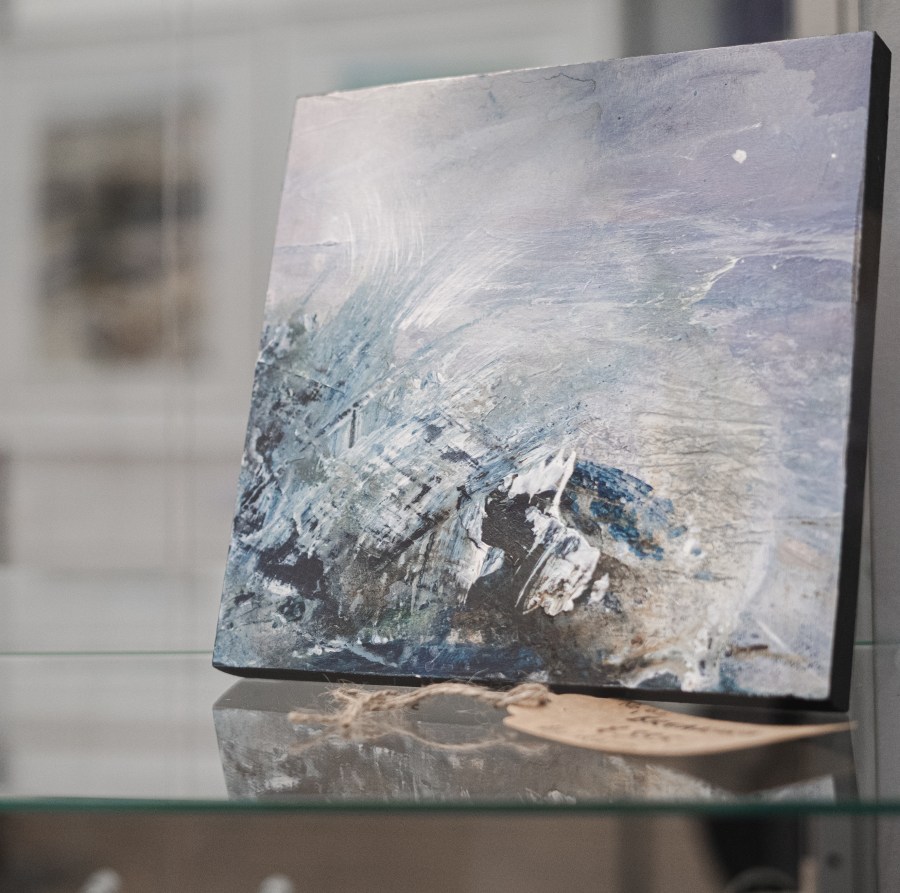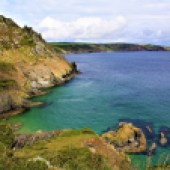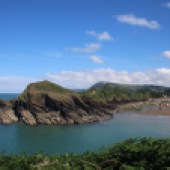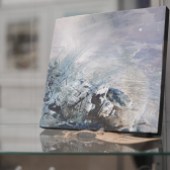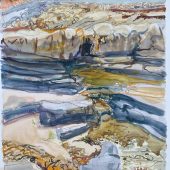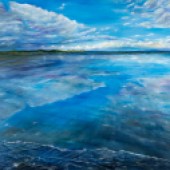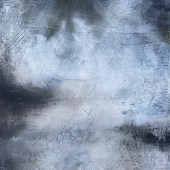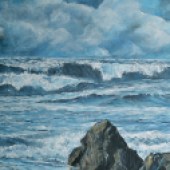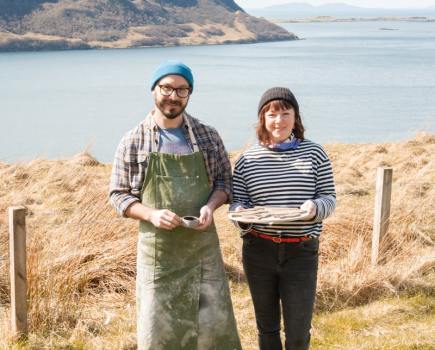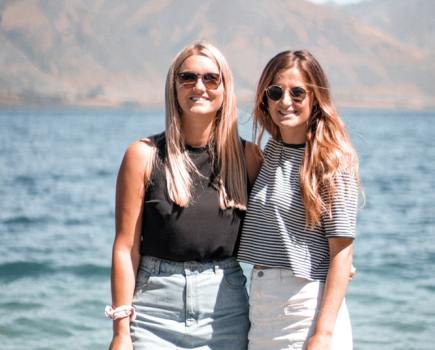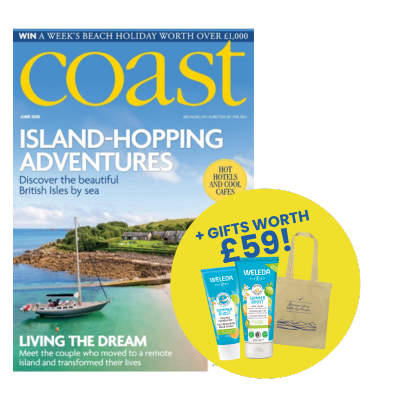KIRSTY DEWHURST dives deeper into the origins of Devon’s new coastal art movement which is making waves across the South West.
A collective of north Devon artists recently identified the failing of traditional education to provide them with a solid basis on which to start a business or find their creative outlet. There is a growing awareness among them of the need to have a voice, a presence, and a desire to find expression within our society for those who feel isolated and unheard in the rural coastal areas of the UK.
Enter the New Atlantic Wave, an upcoming art collective, promoted by not-for-profit organisation, ArtMakers, to provide a platform for artists and makers across north Devon to showcase their creative abilities.
Each artist in the New Atlantic Wave works in different mediums, from acrylic and oils to eco-printing (Lorna Shone and Annabel Hill) and recycling (Lisa White), reflecting contemporary concerns as well as long established traditions.
The collective embraces everyone from established printmaker Merlyn Chesterman to new emerging illustrator Claire Coker, and painter Louise Bird. Each artist shares their passion, and vision of life in a contemporary coastal setting with all its possibilities.
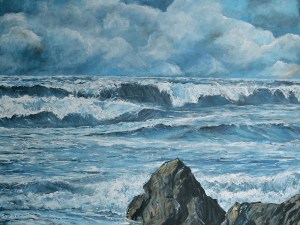
A history of coastal artists in the South West
The Atlantic coastline of South West Britain has been home to artists and makers for over a century. In the 1920s, the St Ives School of Art was established, and this community saw Ben Nicholson’s beachfront studio at Porthmeor become home to various artists including Patrick Heron, Peter Lanyon and Wilhelmina Barns-Graham, amongst others.
Sculptress Barbara Hepworth, whose former studio is now a major centre in St Ives, established herself there, along with Bernard Leach, and his friend Shōji Hamada, who founded their pottery studio. To this day, Leach is considered one of the most influential figures in British ceramics, with many famous potters training under him at the Leach Pottery.
In north Devon, Bernard’s son, Michael, set up a pottery store in Fremington, while his son, Philip, with his wife Frannie, still runs a studio in Hartland – both locations in the heart of the New Atlantic Wave region.
Further along the Cornish Atlantic coast, the Newlyn School was an artists’ colony from the 1880s until the early 20th century. Walter Langley, following Stanhope Forbes, pioneered the Newlyn art colony, establishing an artistic tradition continued to this day by artists in north Devon. In the late 19th and early 20th centuries, Lamorna became associated with the artist S.J. “Lamorna” Birch who lived there from 1892. These schools, along with a related California movement, painted ‘en plein air’, a tradition now being reimagined by artists in the New Atlantic Wave.
In the historical context of these Atlantic coast artists, the New Atlantic Wave has a new location with a diversity of styles and methods, marking the emergence of a new generation of artists.
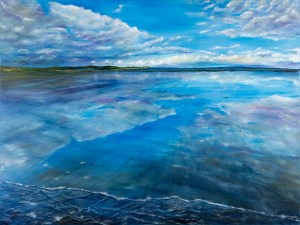
The north Devon Coast: home of the New Atlantic Wave
Home to a series of small coastal towns from Lynmouth to Hartland, north Devon is a hidden landscape with an abundance of rolling hills, secret coves, battered headlands and meandering estuaries. It is now home to over 300 practising artists and makers who are not only reshaping their place in the world of arts and crafts, but also the local economy.
There are clusters of artists in towns all over the region, such as Ilfracombe, with its legacy of Damien Hirst, and the annual Art Trail of over 40 artists. In contrast, in the small village of Shebbear, an atelier trains hand-made furniture makers from all over the world. However, it is the individual artists and makers working from converted bedrooms and pop-up studios who have collectively formed the foundations of the New Atlantic Wave.
This new wave of artists and makers use the unique, rugged landscapes typical of the north Devon coastline to express a diversity of images and creative work. These include the seascapes of painters Sarah Lockett, Michelle Cartlidge, and Rachel Stanton, with their fascination for capturing the light and movement of coastal waters. They also include the 365-day ‘en plein air’ work of Deborah Last, and the atmospheric landscape works of Christine Basil and Jill Harker.
Until now, north Devon has rarely been featured when discussing notable artists in neighbouring Cornwall or in the wider art world, hence the significance in the rise of a new artist and makers community. By raising the profile of the New Atlantic Wave, ArtMakers are putting the region’s artist community on the map.
Of this community, over 80 per cent are female, a strong figure when considering that the top five wealthiest British artists are all male. The emergence of a new wave of female artists is explained, in part, by the increasing public clamour for more representation in the visual arts and the movement within public bodies and commercial galleries to address this.
So, if you were to ask, what is new about the New Atlantic Wave? We’d answer many things, from its historical roots to its contemporary expression, but perhaps what is really new is its movement within a marginal region of the UK which is giving new expression to artists and makers who, until recently, have remained under the radar.
The emergence of this group of creatives points to a new way forward for isolated towns and villages, seeking to halt the outward migration of talent, and move towards a more diverse economy. These artists form part of a minority who have stepped outside of the typical careers on offer in the rural coastal communities and bustling tourist hot spots of the South West to pursue their artistic visions.
Phil Parker, co-founder of ArtMakers states: “When J.M.W. Turner drew sketches along the North Devon coast in 1811, little could he have imagined the same landscape would now be the home of a new Atlantic wave of artists and makers.”
Browse the New Atlantic Wave or buy art from the collection at artmakers.uk. Or stay up to date on Instagram or Facebook by following @ArtMakersUK
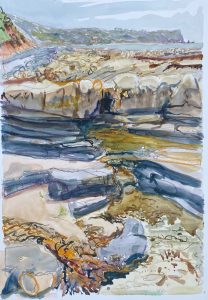
An Introduction to ArtMakers
ArtMakers is a not-for-profit organisation founded by Phil Parker and Hilary Beecroft, a North Devon duo who have made it their aim to provide a stage for local artists and makers to broadcast their work to a wider community of art lovers.
Set up during the pandemic, ArtMakers was born out of the pairs love for art, as well as their recognition for the challenges that come with living in some of Britain’s most rural and coastal locations.
Since launching in October 2021, ArtMakers has hosted five virtual exhibitions using a New York-based app, each with great success, and by the end of November 2022, they had over 100 artists and makers showcasing art works on their site.
How can artists get involved?
Artists and makers country-wide can sign up to obtain support and information through ArtMakers. Their basic, free membership includes a list of key contacts, marketing and business tools and a selection of more detailed ‘how to’ downloads, as well as a peer to peer chat room.
Northern Devon-based artists and makers can also exhibit their work for free or as Standard and Standard Plus members. Subscriptions start at £4 or £8 per month with a 10 per cent discount for those who choose to pay annually. Both include training and networking events for increased exposure to potential buyers and involvement in the artistic community.
By selling art through ArtMakers, artists will be paid up-front, whilst sellers will be given the option to spread the cost over ten months.
Feeling creative? Meet another artist inspired by the coastline here.

